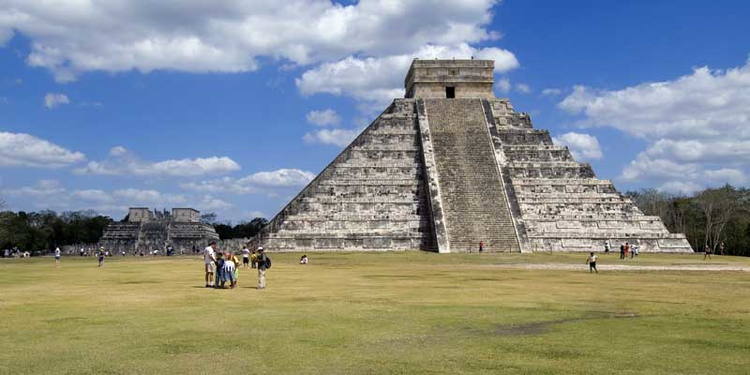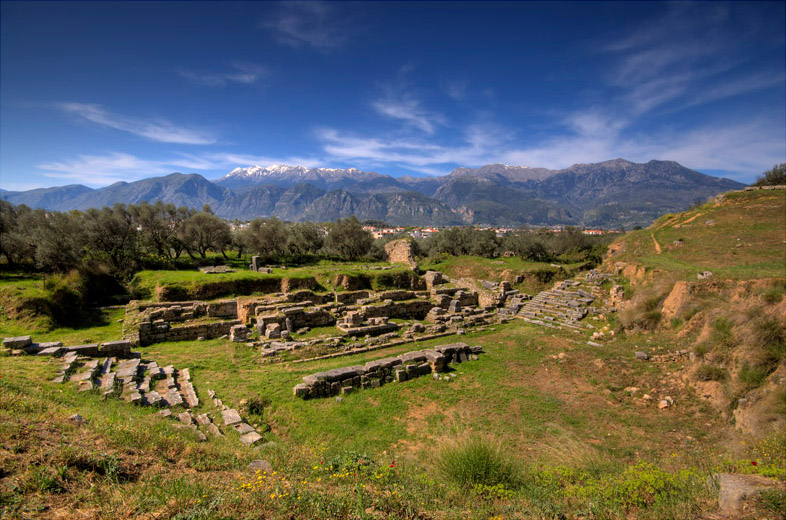When we think of the trajectory of the human race, both socially, economically, and technologically, we generally are taught to think of it as a straight, upward moving line. People are getting better, and better, right? That assumes that the ancient cultures of the world were primitive compared to us today.
That might be partially true, however, a more accurate analogy of the trajectory of the human race might be more of an up-and-down bumpy line. Advanced cultures have come and gone, replaced by less advanced ones, and yet we generally downplay just how impressive some ancient civilizations truly were for their time in terms of technological advancements and societal values.
Here’s four civilizations that were actually way more advanced than you probably thought they were.
1. The Ancient Maya

PHOTO: unesco.org
The Maya were a diverse group of people who lived in what is now Mexico, Belize, Guatamala, El Salvador, and Honduras. The Maya had their height of power between 300 and 900 AD, and were responsible for some pretty impressive scientific achievements. The Maya created one of the world’s first written languages. Because they believed that the cosmos had a profound impact on their daily lives, they worked to understand the movements of the sun, moon, and stars. Because of this, they had an unrivaled understanding of astronomy, and even created accurate 365-day calendars.
They managed to build massive, complex cities and temples without the help of metal or the wheel. They also invented water-resistant cloth, rubber balls for their games, glittery paint, and glue bindings for books long before any of these things were invented in Europe.
2. Ancient Israel

PHOTO: witakercenter.org
While we may not think of Ancient Israel as particularly technologically advanced, they were surprisingly socially advanced compared to other cultures. The golden age of Israel happened right around 2924 to 2964 BC. By this time, Israel was a thriving, small kingdom that had a profound influence on its neighbors. Because of the strict social laws laid of in the Pentateuch, their holy book, the Israelites had a number of practices that put them far ahead of their neighbors.
The people of Israel were obsessed with bathing and keeping clean. In fact, one of the ways archaeologists know whether or not they’ve discovered an ancient Israelite city is by the presence of Mikvahs, or communal baths. The laws of Israel made washing hands before and after a meal compulsory. Bathing was mandatory. This was a novel concept in many ancient cultures until the rise of public bathhouses in Greece and Rome. In fact, this Jewish practice saved Poland thousands of years later when the Black Death swept through Europe. Because there were so many Jews in Poland, bathing had become a cultural norm, unlike the rest of Europe – who believed bathing to be unhealthy. This social bathing ensured a clean environment and halted the spread of the Plague before anyone even scientifically knew why.
There were also laws in place to protect Israel’s poorest, including laws that forced wealthy landowners to allow widows and homeless people to harvest small portions of the food grown on their land. While the Israelites did own slaves, they were required by law to allow the slave to go free after seven years. Domestic abuse was illegal, and women had mandatory maternal leave, when they were expected to rest and recuperate from pregnancy and labor- a right unheard-of in the ancient world.
3. Petra and The Nabataeans

PHOTO: pomegranate-travel.com
While the ancient city of Petra is famous across the world, not much is taught about the culture that built it in schools, which is quite a shame. The Nabataeans were an immensely thoughtful, creative society that were able to literally carve a world of their own out of harsh, desert rock. They tamed nature and harnessed water, not only as a resource, but as a display of their power to their neighbors.
Petra reached its height 2000 years ago, during the height of similar great empires like Persia, Greece, and Rome. In order to create the city the Nabataeans not only found a way to reserve enough water for drinking, but also to irrigate lush gardens with lavish fountains and a swimming pool. They created a complex system of aqueducts, cisterns, ancient water-purifying tanks, and had enough water to cultivate crops, harvest fruit, create wine and olive oil, and give tourists a place to swim.
In a place that gets just 4 to 6 inches of rain a year, this was an immense achievement. Every single drop of rain that fell on Petra was captured and preserved. They had a knowledge of the water table beneath their feet, and harnessed it by carving underground cisterns and decking them out with miles of pipelines. Botanical studies on the gardens of Petra show them to be ridiculously ornate, growing palm trees, fruit trees, and grasses. Oh, and the pool they made in the middle of the desert? It was bigger than a today’s Olympic pools.
4. The Spartans

PHOTO: wikimedia
When we think of socially advanced societies, Athens probably springs to mind, not her warlike, fierce neighbor, Sparta. Sparta gets a pretty bad reputation when it comes to philosophy, literature, and the arts — but as far as women’s rights go, it was one of the most advanced ancient cultures of its time.
Spartan women, by nature, had an unheard-of amount of power in their home city-state. Because the men were always off training for war, managing the money, the slaves, the children, family business, and the estates fell on the women. They were incredibly business-savvy, and held an immense amount of social power.
Spartan girls were educated just the same as Spartan boys. They were given an intense amount of physical education, were taught to use weapons, and were also taught how to read, write, and do math…because they had to manage their households, duh.
Not only that, but Spartan women were allowed to physically mutilate their husbands if they tried to abuse them. If a man tried to rape a women, she was legally allowed to castrate him herself. Or her friends could help her. Whatever floated her boat.
Societies like the Maya, Ancient Israel, Petra, and Sparta definitely weren’t perfect, but they were examples of societies that knew far more about their world than we usually give them credit for. They made do the best they could with the resources they had at their disposal, and oftentimes…they got it so right.

